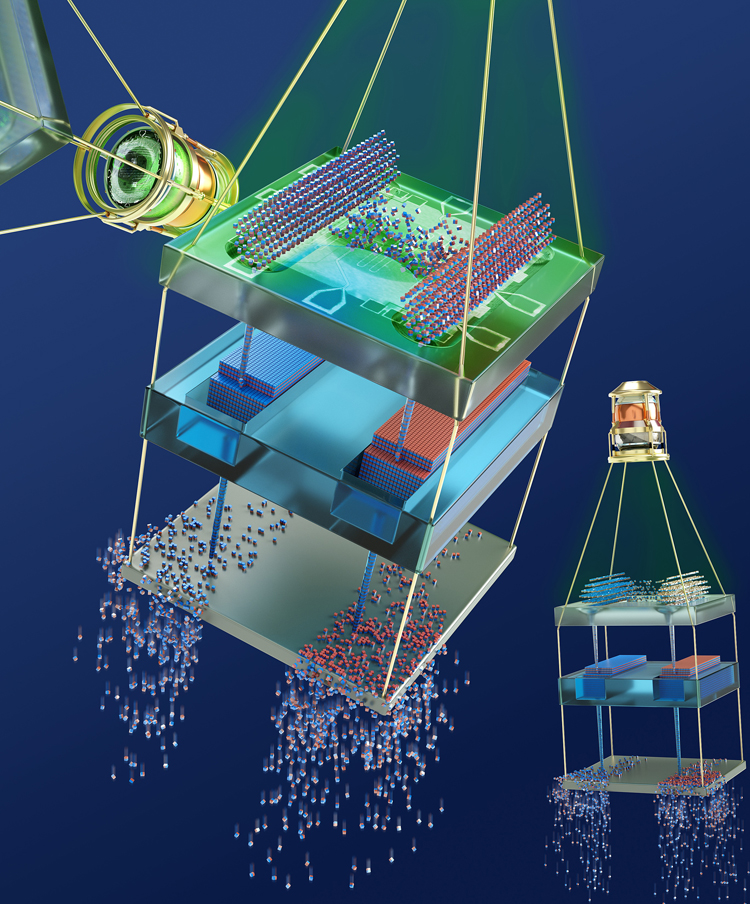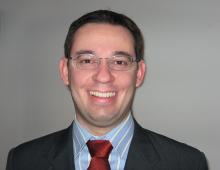
Quantum Physics Research Chosen as One of Physics World's Top Ten Breakthroughs of 2011

Quantum hardware developed by physicists at UC Santa Barbara is among the Top 10 Physics Breakthroughs of 2011, as named by Physics World, the news organization of the Institute of Physics.
In September, physicists reported in the journal Science that they had demonstrated a quantum integrated circuit that implements the quantum von Neumann architecture. In this architecture, a long-lived quantum random access memory can be programmed using a quantum central processing unit, all constructed on a single chip, providing the key components for a quantum version of a classical computer.
The UCSB hardware is based on superconducting quantum circuits, and must be cooled to very low temperatures to display quantum behavior. The architecture represents a new paradigm in quantum information processing, and shows that quantum large-scale-integration, based on qubit-resonator arrays, is within reach.
The UCSB experiment was pursued primarily by Matteo Mariantoni, postdoctoral fellow in the Department of Physics, under the direction of Andrew N. Cleland and John M. Martinis, both professors of physics. This is the second year in a row that a breakthrough by a Martinis/Cleland team has been named in Physics World's top 10.
"UC Santa Barbara is proud to be a leader in the exciting field of quantum computing, with breakthroughs taking place on many fronts in the last few years," said Chancellor Henry T. Yang. "Our campus community is so honored and pleased that the pioneering work of Dr. Matteo Mariantoni and his research team, under the direction of Professors Andrew Cleland and John Martinis, has been recognized as one of the Top Ten Breakthroughs of 2011 by Physics World. Their innovative research has taken quantum information processing to the next level, and points the way forward for even more breakthroughs to come."
Pierre Wiltzius, the Susan & Bruce Worster Dean of Science, said: "We are very proud of this distinction for the breakthrough work in quantum computing by Dr. Mariantoni and Professors Cleland and Martinis. Demonstrating the feasibility of a quantum chip with processors and memory is a great scientific achievement and a monumental step towards building quantum computers."
Upon hearing the news, Mariantoni said: "I am honored that our work on the quantum von Neumann machine has been named in Physics World's Top 10 Breakthroughs of 2011. I believe I share the bliss of the entire Martinis/Cleland quantum-computing group at UCSB for this prestigious nomination. I would like to thank all the students and postdocs of the Martinis/Cleland group and, in particular, Professors Andrew Cleland and John Martinis for their continuous support in this project."
To determine the top 10 breakthroughs, the Physics World team reviewed over 350 news articles about breakthroughs in the physical sciences published on physicsworld.com in 2011. The criteria for judging included fundamental importance of research; significant advance in knowledge; strong connection between theory and experiment; and general interest to all physicists.
Mariantoni was supported in this work by an Elings Prize Fellowship in Experimental Science from UCSB's California NanoSystems Institute.
† Top image: The quantum von Neumann architecture: A classical eye projects and controls a quantum circuit. Quantum information (little blue and red cubes representing 0 and 1 bits of information) is processed in the top layer of the architecture (disordered cubes), the quantum CPU. The information then funnels to the second layer, where it is stored in the quantum memory (ordered cubes), the quRAM. Quantum information that has already been utilized, and becomes unnecessary, can finally be deleted on the bottom layer (cubes fading away), the zeroing register.
Credit: Peter Allen
Related Links
Cleland Group
Martinis Group
Physics World
California NanoSystems Institute Elings Prize Fellowships



